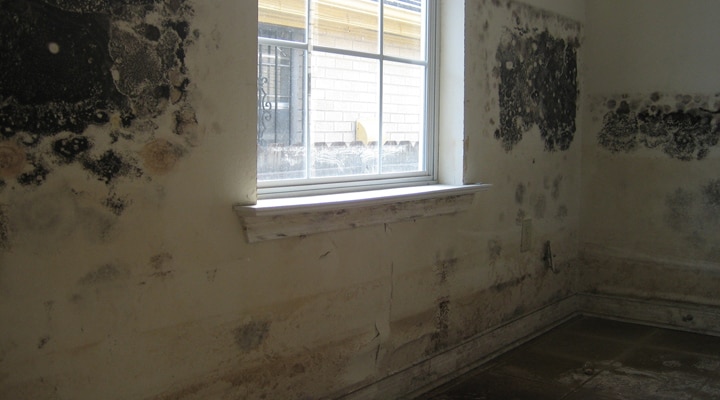Key points
- Cleaning up mold, whether from a small leak or a major flood, can present health and injury risks.
- Learn how to clean up safely in order to protect your health while making your home environment a healthier place to live.

Who shouldn't clean mold
Some people are at risk of significant and even severe health effects from mold exposure. These individuals should not take part in cleaning up:
- People with allergies, who may be more sensitive to molds
- People with immune suppression or underlying lung disease, who are at higher risk of fungal infections
- Individuals with chronic respiratory diseases like asthma or chronic obstructive pulmonary disease (COPD), who may have trouble breathing when exposed to mold
What to wear
Take steps to protect your mouth, nose, skin, and eyes when cleaning up mold.
- Protect your mouth and nose against breathing in mold: wear at least a NIOSH Approved N95 respirator. If you plan to spend a lot of time removing moldy belongings or doing work like ripping out moldy drywall, wear a half-face or full-face respirator.
- Protect your skin. Wear protective gloves (non-latex, vinyl, nitrile, or rubber). Do not touch mold or moldy items with bare hands.
- Protect your eyes. Wear goggles that provide complete eye protection. Choose goggles designed to keep out dust and small particles. Safety glasses or goggles that have open vent holes will not protect you against dust and small particles.
Stay covered!
Using bleach safely
Reminder
Bleach or dish detergent can be used to clean mold in your home. What you need to do to clean up mold will depend on how much water damage your home suffered and where the mold is growing. Open windows or doors to let in fresh air when using any cleaning products.
Use no more than 1 cup of bleach in 1 gallon of water.
Staying in your home while you clean
After a hurricane or major flood, you may have to live in a home with mold in it. This could last for weeks or even months. Your whole community may be affected. If you have to stay in a moldy home, you need to take steps to reduce your exposure to mold.
If you have asthma, COPD, or if you are immune compromised you should not stay in a moldy home, or even be there while it is being cleaned.
You can take steps to reduce your exposure to mold and stay healthy while staying in your home during the cleanup process. Learn how to reduce exposure below.
